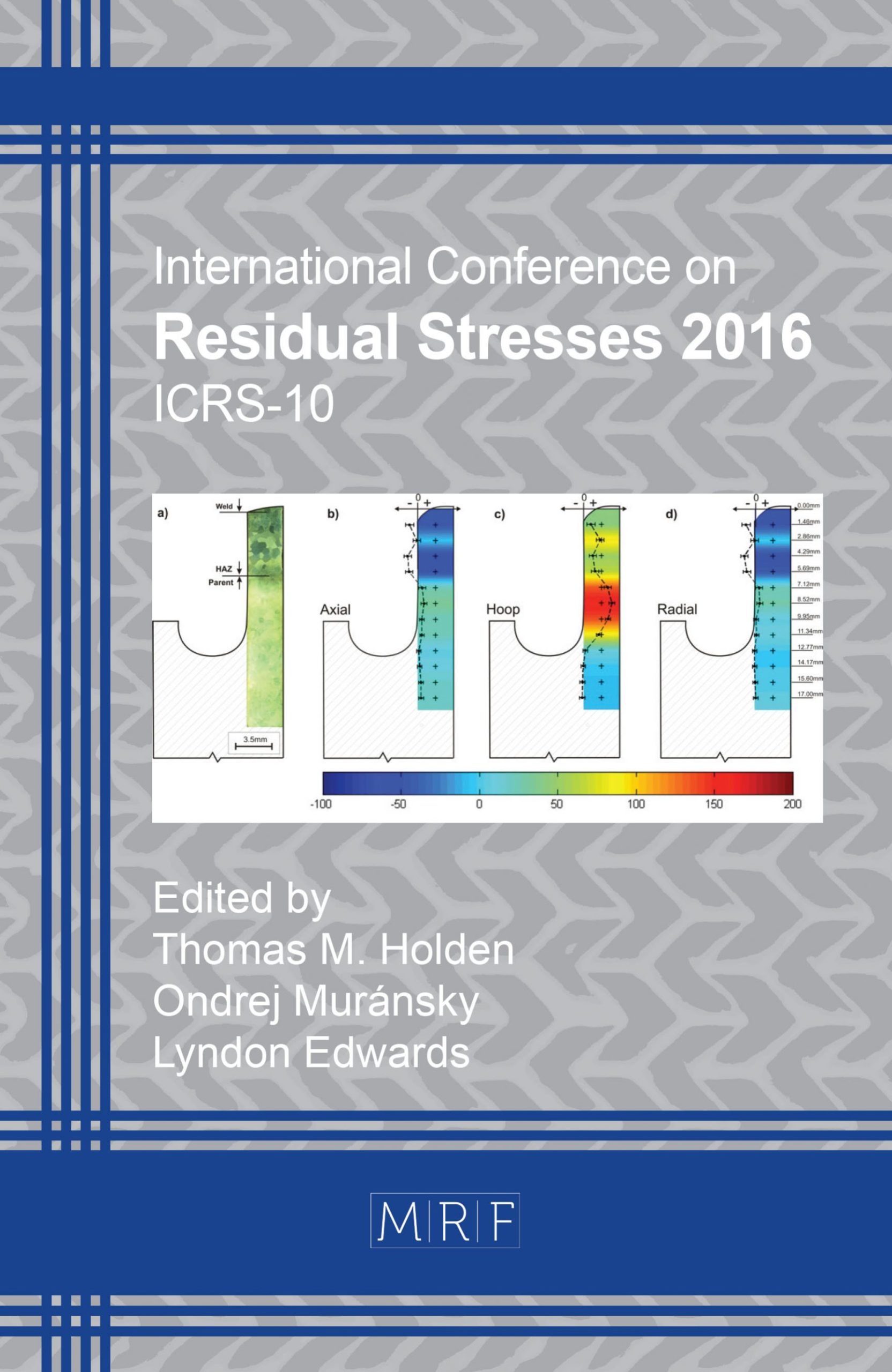Comparison of X-Ray Residual Stress Measurement Values by Cos α Method and Sin2 Ψ Method
A. Kohri, Y. Takaku, M. Nakashiro
download PDFAbstract. In recent years, Sasaki et al. has developed the X-ray residual stress measurement device (µ-X360) using the “cos α” method [1, 2]. µ-X360 has been used widely in Japan. µ-X360 uses a 2D detector, and the measurement can be done by only single irradiation of X-ray. Accordingly the device is small and light, and stress measurement is conducted in a short time. For these reasons, µ-X360 is expected to be applied to on-site stress measurement of the structures. Generally the “sin2 ψ” method has been used for the X-ray residual stress measurement. We, IIC, have been providing field measurement services using the portable X-ray stress measuring device (Stresstech Inc. Xstress 3000) with the “sin2 ψ” method. There are many measurement results with the “sin2 ψ” method, but there are few reports about the measurement with the “cos α” method. Therefore, we measured various samples by the “cos α” method and compared with the measured values with the “sin2 ψ” method, and clarified the characteristics of the results with the “cos α” method.
Keywords
X-Ray Diffraction, Residual Stress, Cos α Method, Sin2 Ψ Method
Published online 12/22/2016, 6 pages
Copyright © 2016 by the author(s)
Published under license by Materials Research Forum LLC., Millersville PA, USA
Citation: A. Kohri, Y. Takaku, M. Nakashiro, ‘Comparison of X-Ray Residual Stress Measurement Values by Cos α Method and Sin2 Ψ Method’, Materials Research Proceedings, Vol. 2, pp 103-108, 2017
DOI: http://dx.doi.org/10.21741/9781945291173-18
The article was published as article 18 of the book Residual Stresses 2016
![]() Content from this work may be used under the terms of the Creative Commons Attribution 3.0 licence. Any further distribution of this work must maintain attribution to the author(s) and the title of the work, journal citation and DOI.
Content from this work may be used under the terms of the Creative Commons Attribution 3.0 licence. Any further distribution of this work must maintain attribution to the author(s) and the title of the work, journal citation and DOI.
References
[1] Sasaki, T and Hirose, Y, J. Soc. Mat. Sci., Japan 44, 504, (1995) 1138-1143
[2] Miyazaki, T and Sasaki, T, J. Appl. Cryst. (2016). 49, 426–432.
http://dx.doi.org/10.1107/S1600576716000492































